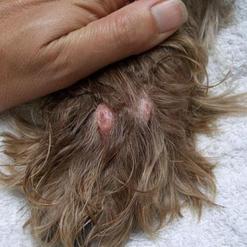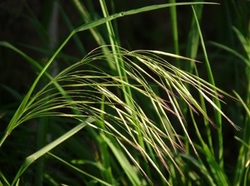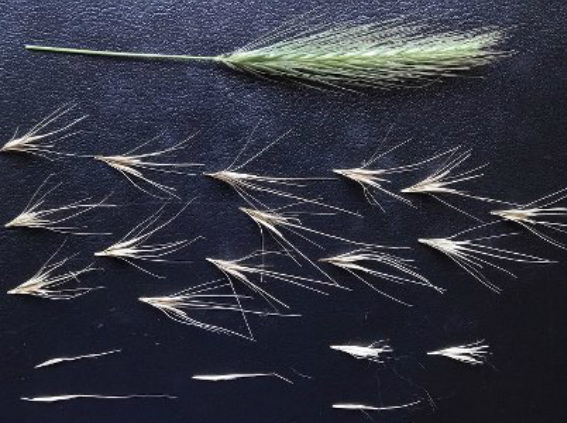grass seeds
Grass seeds produce spikelets which can easily penetrate a dog's skin. Spikelets attach themselves very easily to the velcro-like coat of the Spinone. They can then enter the skin firstly through the long central spike called the awn. Retrose (backwards facing) barbs along the ancillary spikes use a ratchet effect to propel the seed very rapidly through the skin, and into the flesh of the animal. Left unattended these seeds will continue their journey until they exit the animal or puncture a vital organ causing serious illness or death. When they travel into the animal's flesh they can carry disease and infection with them.
preventative methods
- The number one preventative method is avoidance. See below for pictures of the grasses to avoid. Unfortunately these grasses are quite prevalent in the UK and in some areas are impossible to avoid.
- To prevent fallen seeds entering the paws, clip the tufts of fur between the pads using flat nosed scissors. On the top of the paw, stroke your finger between the toes from the tip to foot to make the hair stand up and clip close to the foot. Next trim the hair around the outside of the paw.
- Trim the hair in the armpits and under the tail, around the anal and vulval areas.
- Fashion a headband from fishnet tights, stockings or a child's stretchy alice band and use to cover the ears; they are at particular risk being at the same height as the grass seeds before they drop.
- After each walk check paws, armpits and tail area.
how to treat grass seeds

credit: Jan Anderson
Check your dog thoroughly after each walk paying particular attention to ears, paws, armpits and tail region. Remove any grass seeds you see. If they have started to work their way into the skin you will need to tug them out with tweezers. The photo below shows a wound where the seeds had entered the skin completely. If you enlarge it you will see quite clearly the puncture marks at the centre of the raised lumps.
There are two ways to treat this, with a foot soak to draw out the seed or by using a poultice to draw it out.
There are two ways to treat this, with a foot soak to draw out the seed or by using a poultice to draw it out.
- Soaking: Soak the paw in hot salty (Epsom salts are best) water for 10 minutes, 2 or 3 times a day until the seed emerges.
- Poultice: The one that most breeders swear by is Animalintex. If you live in an area with these grass seeds it is worth having one on standby in your first aid kit, simply follow the instructions on the packet. If you don't have one to hand, use an interim poultice of bread and milk: First clean the wound. Lightly scald some milk in a pan, wait until it starts to rise and then take it off the heat. Pour the milk over a slice of bread to dampen. When it has cooled enough to touch, place it on the site that the grass seed penetrated and hold in place with a piece of clean muslin, cheesecloth or handkerchief. Keep in situ until cooled completely then repeat until the seed comes out or you are able to replace with an Animalintex poultice.
grasses to avoid

In England there are 2 main offenders: The grass pictured on the left is false barley and the one below is wall barley. Wall barley grows very upright whereas false barley has a drooping head. If you see these grasses growing in a field, avoid exercising your dog there if you possibly can. If it's not possible to avoid these grasses then take the preventative measures listed on this page.

